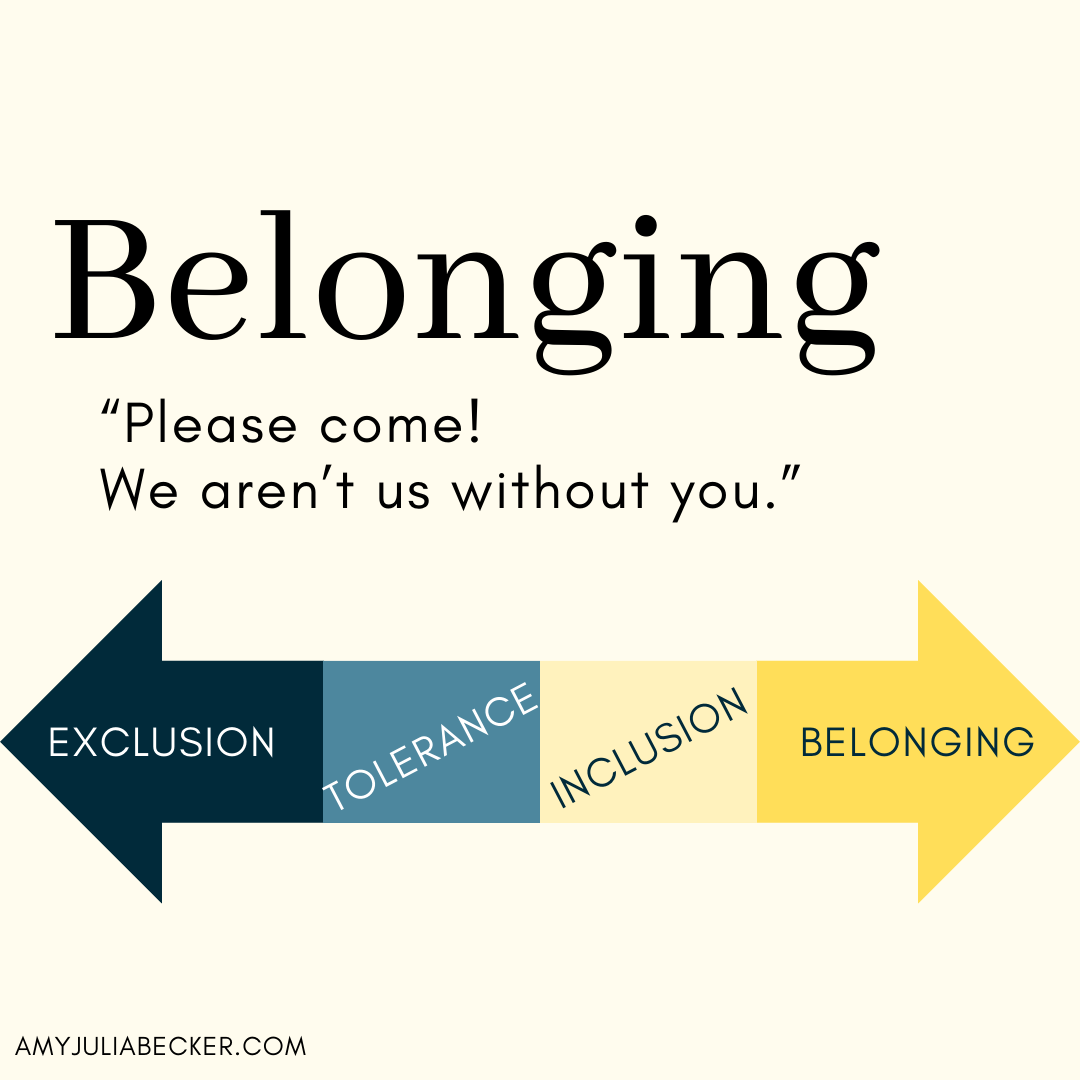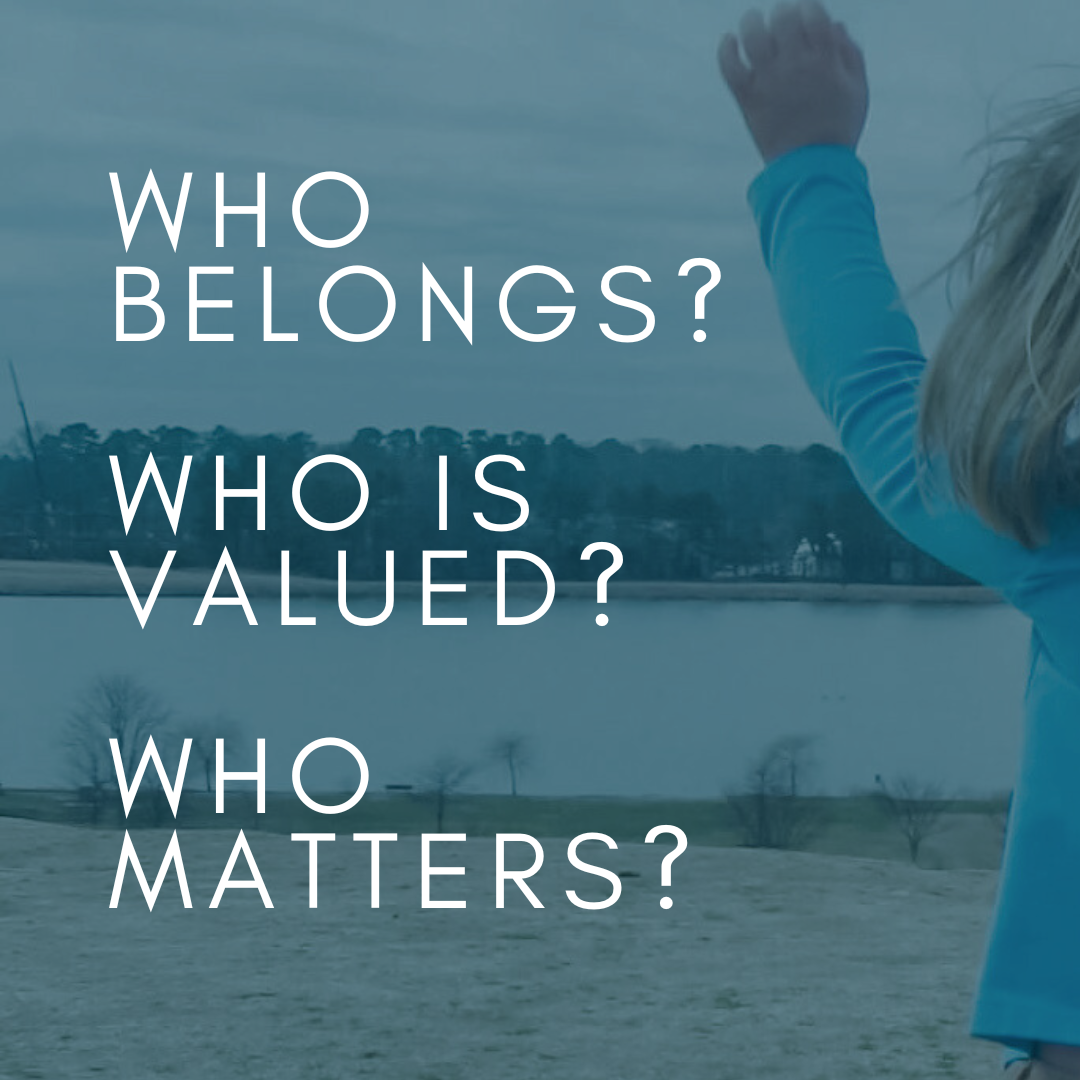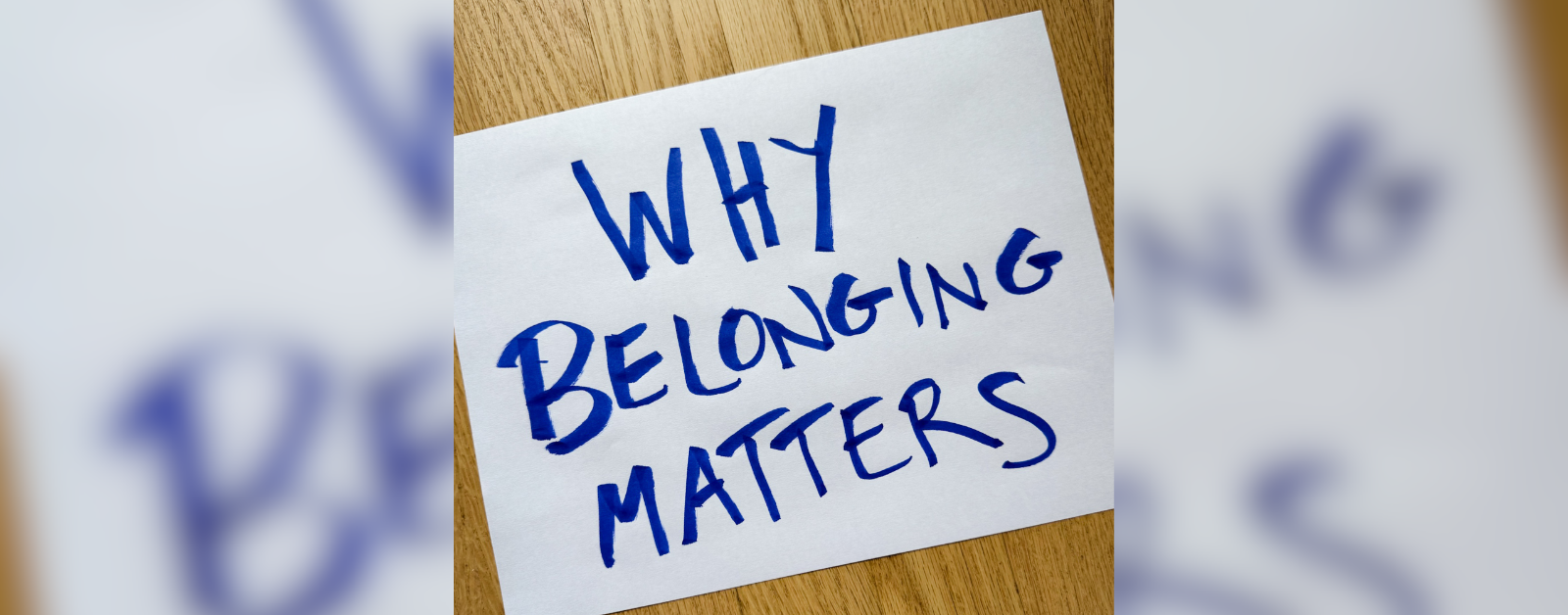I’ve been thinking about the difference between inclusion and belonging. These thoughts have mostly been prompted by all the end-of-high school events for our daughter Penny, who has Down syndrome. Penny graduates on Saturday, so we’ve experienced a lot of high school milestones of late.
[scroll to the end for Erik Carter’s 10 Dimensions of Belonging]
We’ve gotten teary at her final dance show. I’ve helped her get ready for senior prom. We’ve applauded her final chorus performance and cheered some more at the academic awards’ night. But even with graduation on the horizon, I suspect the most memorable experience came when we attended Penny’s senior project presentation.
Which brings me back to inclusion and belonging. They are both buzzwords, and they can easily mean different things to different people. Both words can help us think about social and physical spaces and whether or not our daughter who has Down syndrome—and/or other kids with disabilities and evident vulnerabilities– would be welcomed into those spaces.
I have written here before about a continuum that moves from exclusion to tolerance to inclusion to belonging. Again, some people use the words differently, but I see it this way:
- Exclusion: Outright rejection. You can’t be here.
- Tolerance: Neutral. You can be here, but the space was not designed with you in mind, and we don’t particularly care if you are here or not. Please don’t get in the way.
- Inclusion: You are welcome here, but make sure your presence doesn’t ask too much of the rest of us. We are happy for you to be here as long as it doesn’t ask us to change.
- Belonging: Please come! We aren’t us without you.

I am grateful to say that it is very rare that Penny experiences outright exclusion. Instead, forms of both tolerance and inclusion are the norm. To protect Penny’s privacy, I don’t want to write in detail about these situations. If you have a child who falls outside of the typical teenage social interactions, perhaps you know what I mean when I say that Penny is never rejected but also rarely is in the loop.
But when I walked into the classroom where Penny was sharing her senior project presentation, it felt different. Penny doesn’t always belong within the social world of teenagers. But this school, with its classrooms and teachers and support system and community, is a place of belonging for her. It was amazing to see.
Senior project is a year-long class in which each senior picks a topic to study and works towards that goal all year long. Penny chose events planning. She threw a joint birthday party for herself and Taylor Swift back in December. She organized games in the gym for the opening of the spring sports’ season. She helped plan more activities for the seniors during their final week of school. Last week, it was her turn to present a 30-minute narrated slideshow describing her experience.
She did a wonderful job. She spoke with poise and confidence and humor and humility. But what struck me most was who showed up to hear from her. Sure, some of them were kids who didn’t want to go to class that period. But the majority came to support Penny. There were the other students from her cohort of kids with intellectual disabilities, and a few of her typical peers. There were the teachers from middle school, and the girl who has danced with Penny for years. Our pastor attended, per Penny’s invitation, as well as a family friend. There was even a sixth grade boy there—he knows Penny from when his mom used to babysit for us. The highlight for Penny came from the three older girls—now sophomores in college—who surprised her. One of them has been helping us out with driving lately. She told the other two because they had been on Penny’s cheerleading team. They all showed up.
It took a lot of support for this presentation to happen. Throughout the year, seniors attended the events she created. One friend volunteered to help Penny plan. Teachers not only did the work of assisting her—they also believed it was possible for a student with Down syndrome to work hard, make mistakes, learn, grow, and then stand up and offer a long presentation about all that work. All those people communicated a message about who belongs, who is valued, who matters.
Being in that space wasn’t only an experience of peace and affirmation for Penny. It was a space of beauty and welcome for all of us. When we create spaces of belonging for the people on the margins, it communicates to everyone that they also belong, they are valuable, their presence matters.
I’m still hoping and praying that Penny will experience deep belonging within a group of peers. I’m also incredibly grateful to recognize that she belongs at school.
And I am hopeful that we all look for ways to participate in creating communities of belonging. (How to do that is a post for another day…)
10 Dimensions of Belonging from Erik Carter, PhD:

Image from Vanderbilt Kennedy Center. Go here for full article.

More with Amy Julia:
- Changing the Game: Explaining Exclusion, Tolerance, Inclusion and Belonging to Fourth Graders (and the rest of us!)
- Becoming a Culture of Belonging
- The Spectrum of Welcome: Moving from Exclusion to Tolerance to Inclusion to Belonging
Let’s stay in touch. Subscribe to my newsletter to receive regular updates and reflections. Follow me on Facebook, Instagram, and YouTube and subscribe to my Reimagining the Good Life podcast.



